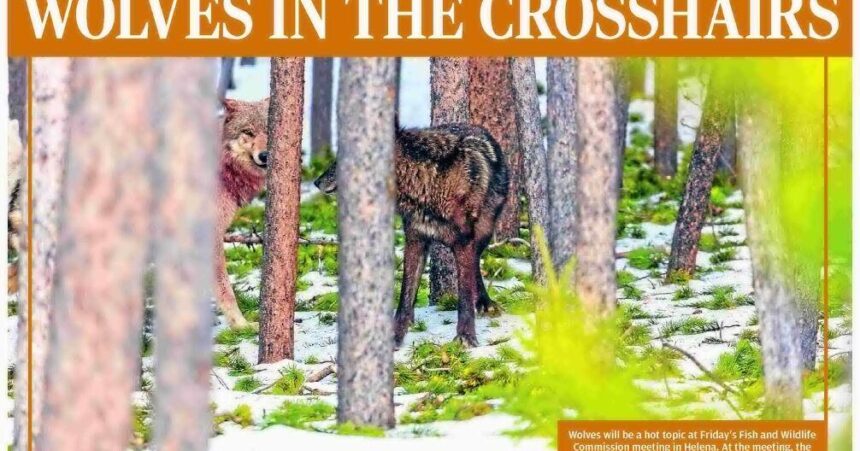Advocates of wolf hunting and trapping will clash with state and national wildlife advocates at a lively Montana Fish and Wildlife Commission meeting on Friday in the state’s capital.
The meeting has been relocated to a larger venue in anticipation of a larger crowd as both sides mobilize their supporters.
The focus of the debate is Fish, Wildlife & Parks’ proposal to allow the killing of nearly one-third of the state’s wolf population in the 2024-25 season. Some believe this is too many, while others argue it’s not enough.
In the past season, hunters and trappers collectively killed 286 wolves — 161 by hunters (56%) and 125 by trappers (44%), according to FWP’s 2023 wolf report. The previous year, 254 wolves were harvested. Despite higher quotas in the past five years, the wolf harvest has been decreasing consistently.
People are also reading…
The state’s wolf population is estimated at 1,096 animals residing mainly in the western third of Montana, with the heaviest wolf harvest occurring in northwest Montana.
Two proposed modifications on the agenda, suggested by Region 3 Commissioner Susan Kirby Brooke and endorsed by Yellowstone National Park Superintendent Cam Sholly, aim to reduce the killing of wolves that primarily inhabit Yellowstone National Park.
One modification would divide a hunting district north of the park boundary into two units, with the proposal allowing the harvest of three wolves in each unit. The goal is to minimize the impact on wolves within Yellowstone.
“It seems like a reasonable compromise to have fine-scale management and lower quotas in this small area of Montana where wolves have not caused issues to other industries and contribute significantly to the local economy,” wrote Yellowstone wolf researcher Kira Cassidy to the commission.
Chris Morgan, vice-president of the Montana Trapper’s Association, disagreed, stating there is “no biological justification” for the proposed change and emphasizing the thriving wolf population in Yellowstone.
The other amendment would prohibit the use of electronic motion-tracking devices to locate and kill radio-collared park wolves.
In the 2021-22 hunting season, 21 wolves that spent most of their time in Yellowstone were killed by hunters and trappers. Following this, the commission agreed to reduce harvest limits at the request of tourism-related businesses estimating over $82 million in annual visitor spending due to Yellowstone’s wolves.
Another agenda modification from FWP postpones a decision on the wolf trapping season to the next commission meeting on Oct. 10 to allow for further evaluation of trapping dates and locations.
In the past, FWP has been criticized for delaying trapping in occupied grizzly habitat until grizzly bears are hibernating to avoid accidental trapping of grizzly bears, protected under the Endangered Species Act.
Even with FWP’s proposal to eliminate all 334 wolves, the population would still exceed the desired level set by Montana’s GOP-dominated legislature.
Rep. Paul Fielder, R-Thompson Falls, expressed concern over the lack of reduction in the statewide wolf population as mandated by the legislature, prompting a call for other measures, such as involving the U.S. Department of Agriculture’s Wildlife Services.
Wildlife Services confirmed the loss of 32 livestock to wolves in 2023, prompting the killing of 27 wolves for depredations and further prevention, along with an additional four killed by private citizens.
FWP has reduced the cost of wolf hunting licenses to boost participation, generating funds for wolf management and monitoring. Since 2009, wolf license sales have contributed nearly $5.4 million.
The efforts to increase wolf hunting and trapping drew the attention of the U.S. Fish and Wildlife Service, which noted Montana and Idaho have adopted regulations that conflict with modern wildlife management practices regarding wolf population reduction.
In response to the USFWS decision not to restore federal protections for wolves, environmental groups filed a lawsuit, challenging the reliance on state-generated wolf population estimates.
Montana’s wolf population estimate is based on various factors, including sightings by hunters and confirmed kills, although critics claim the methodology overestimates the wolf population.





